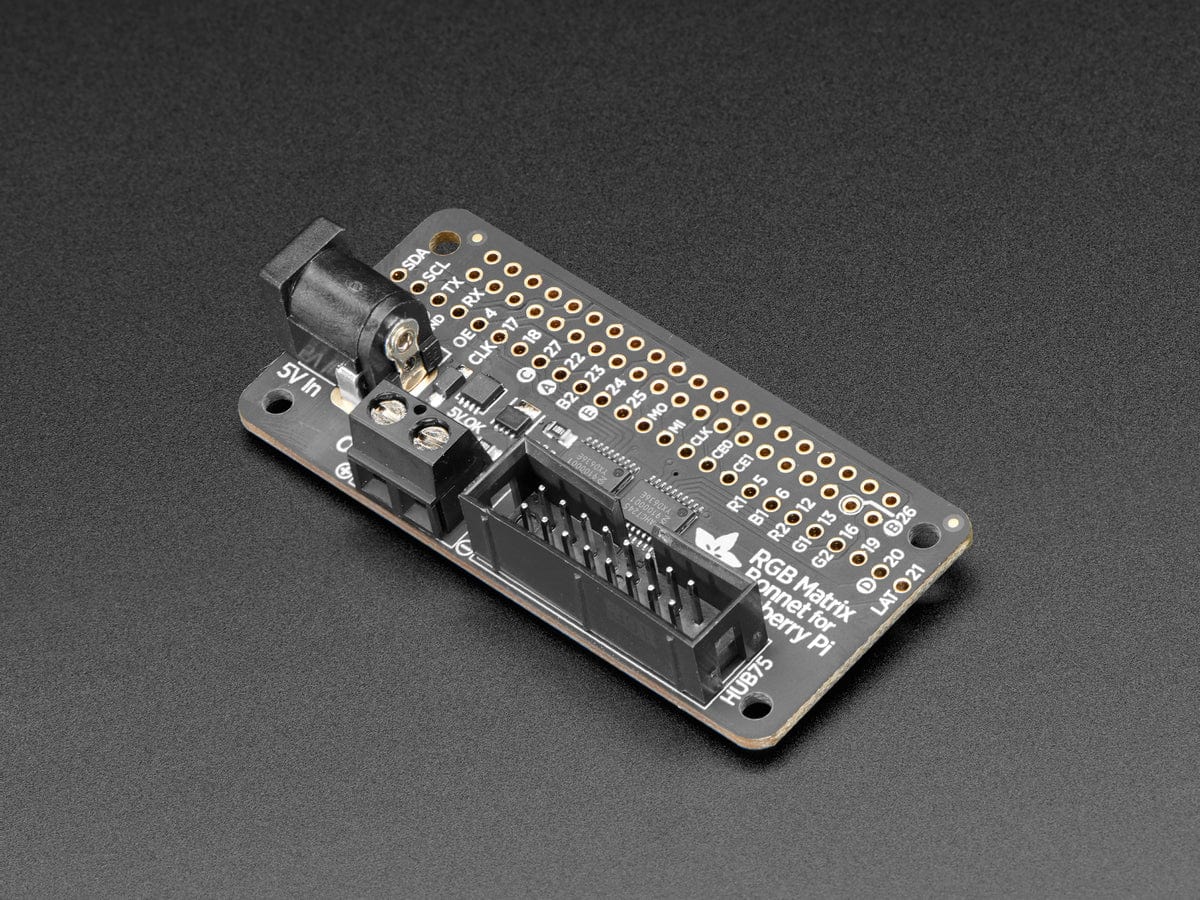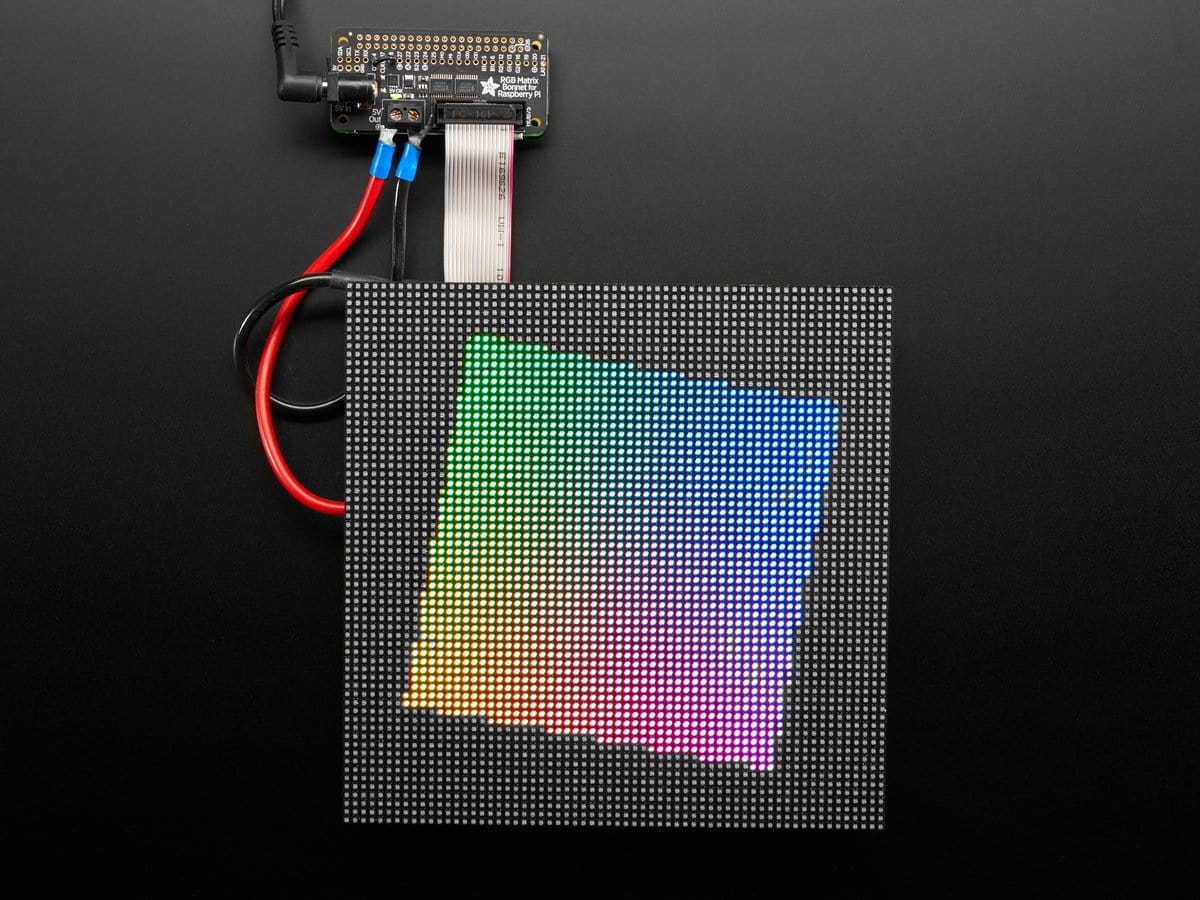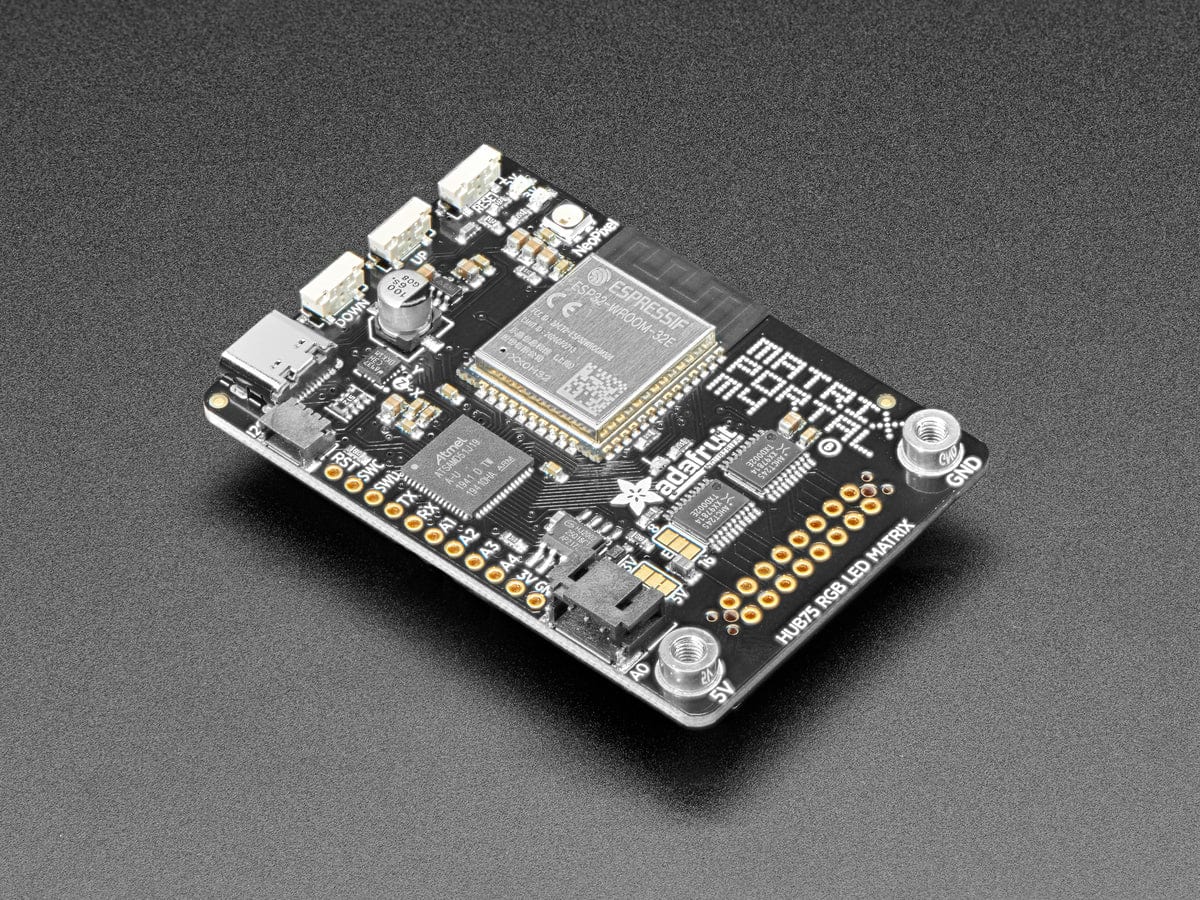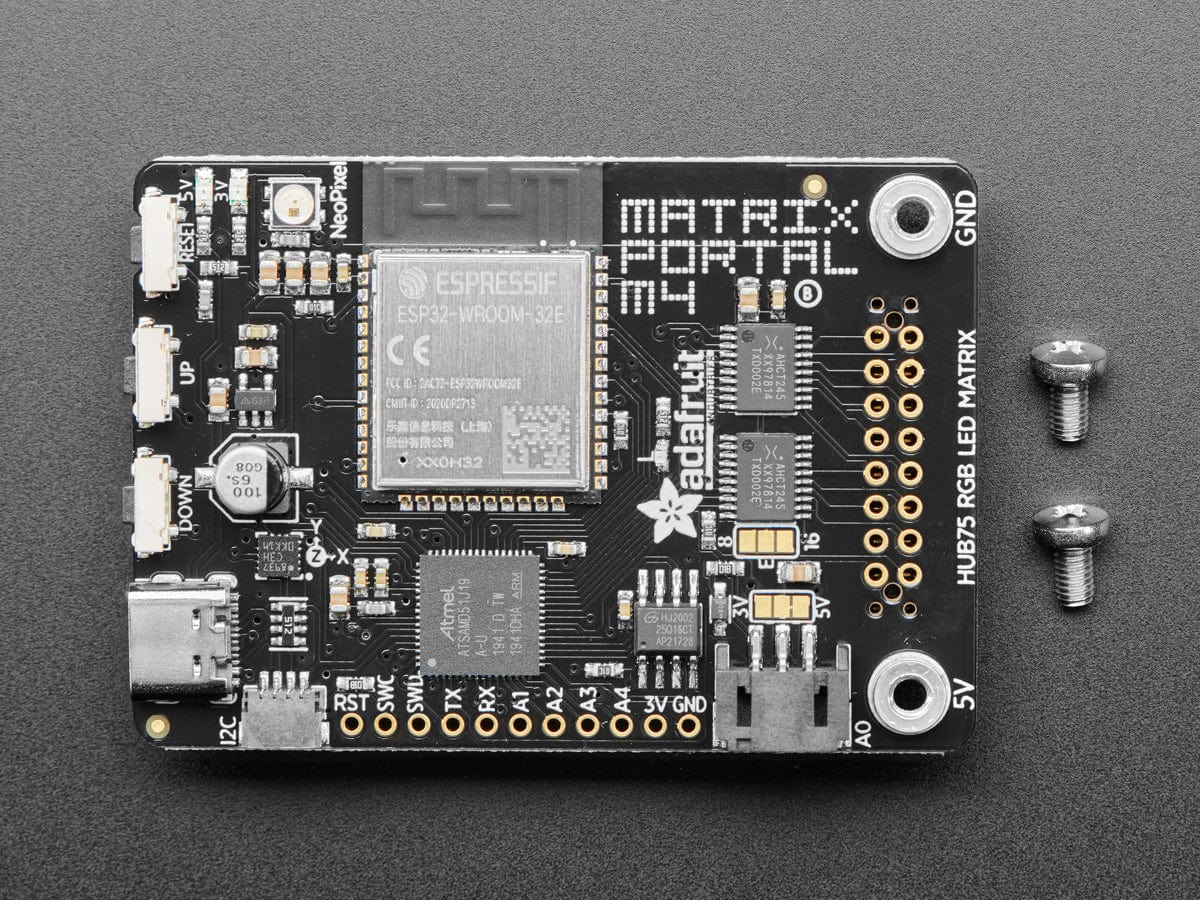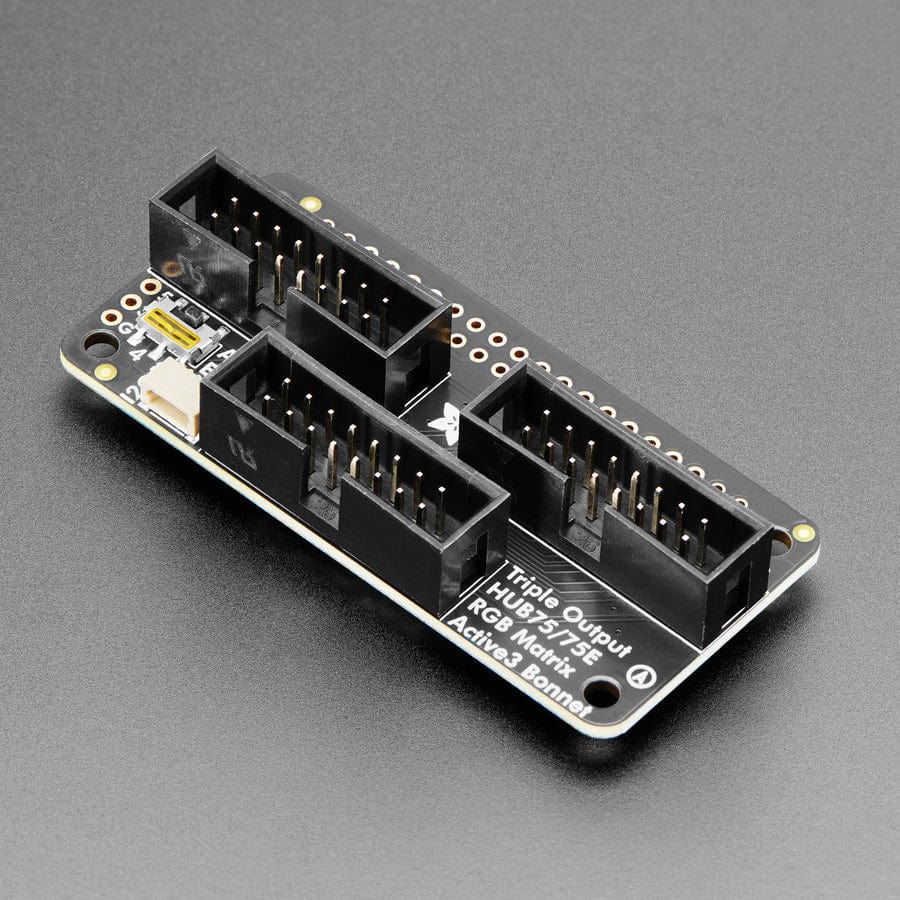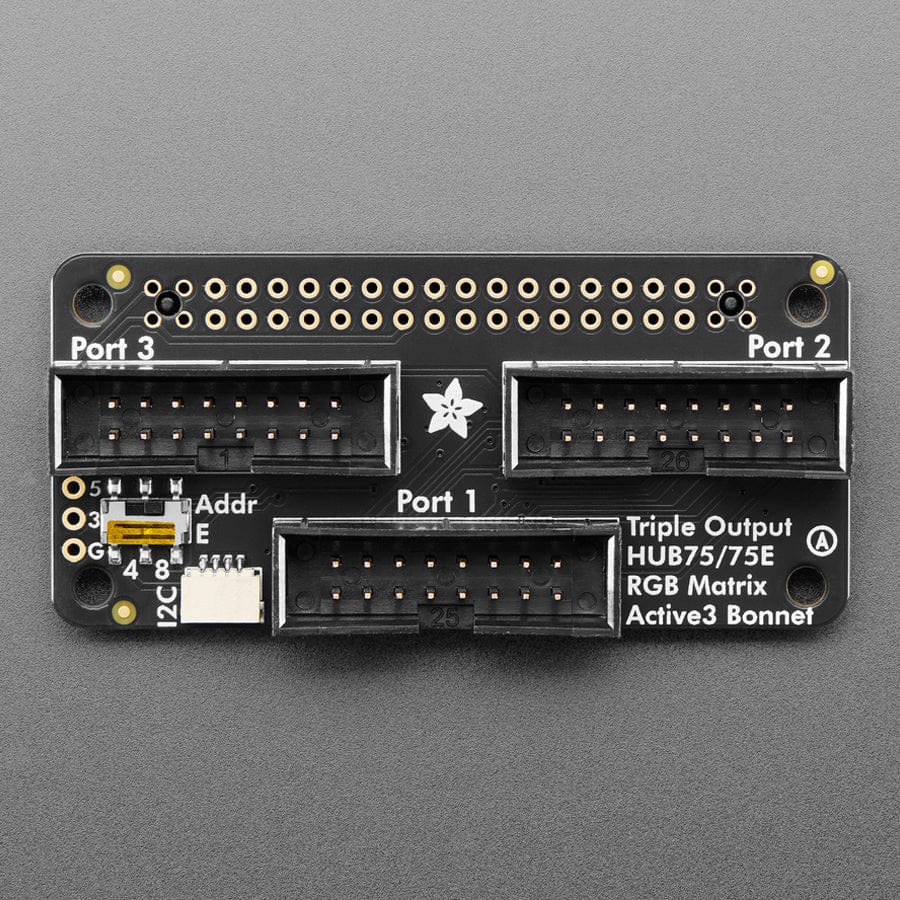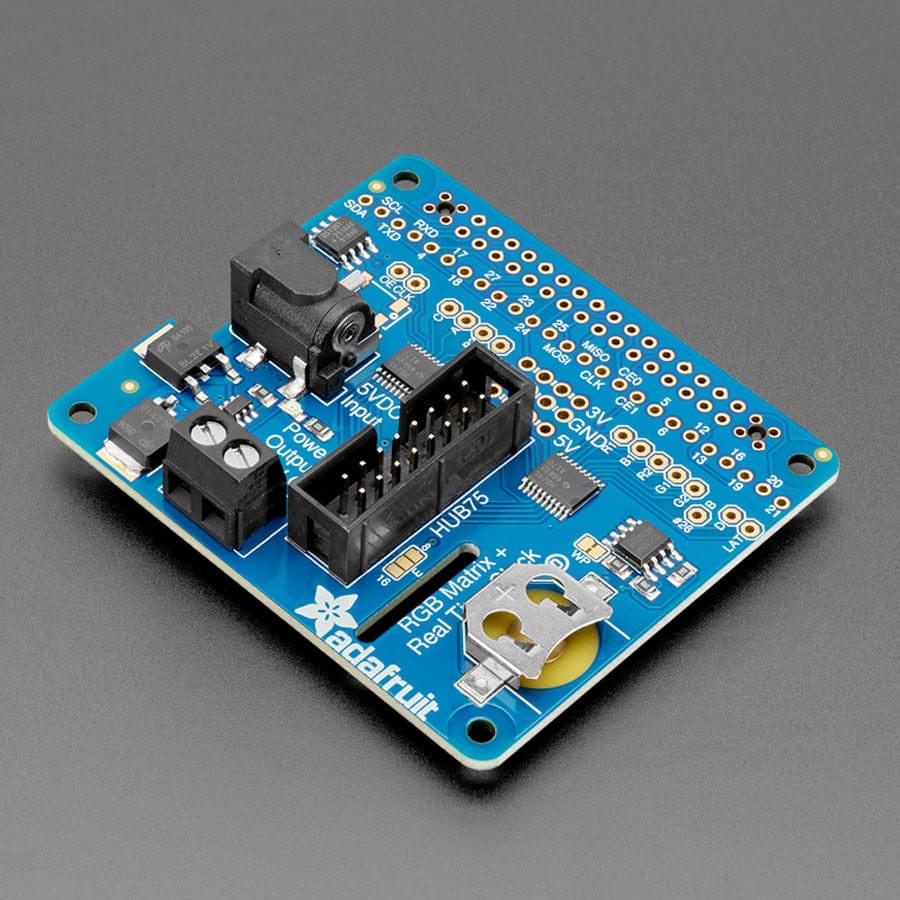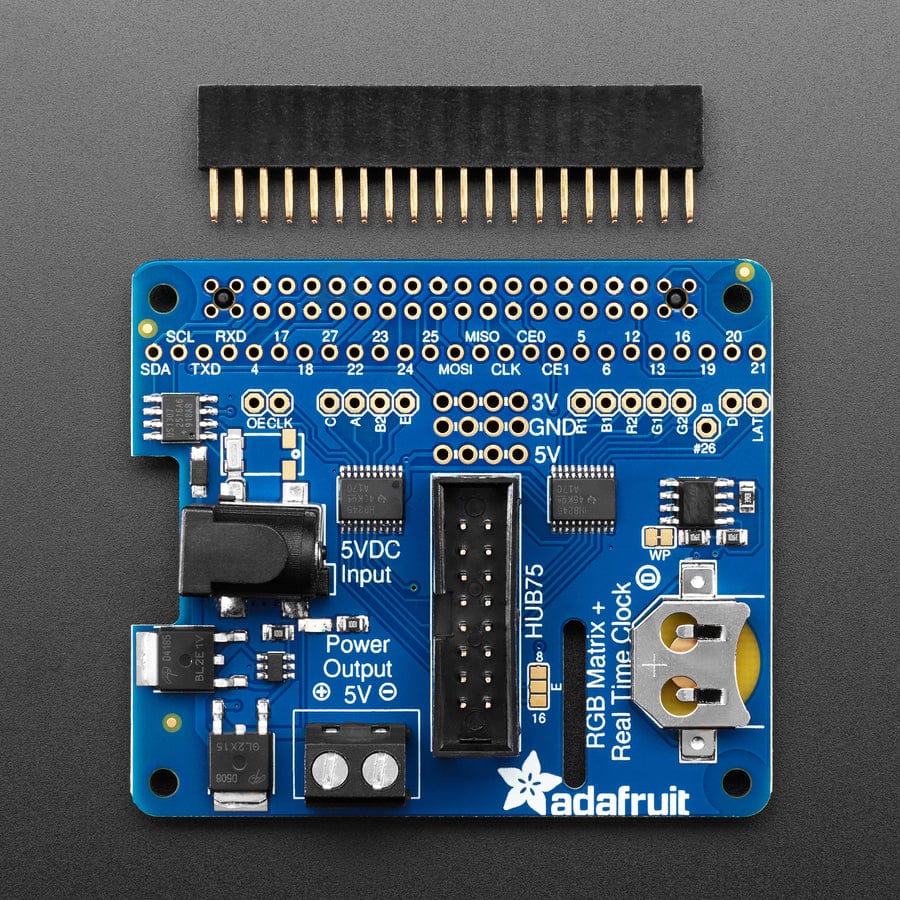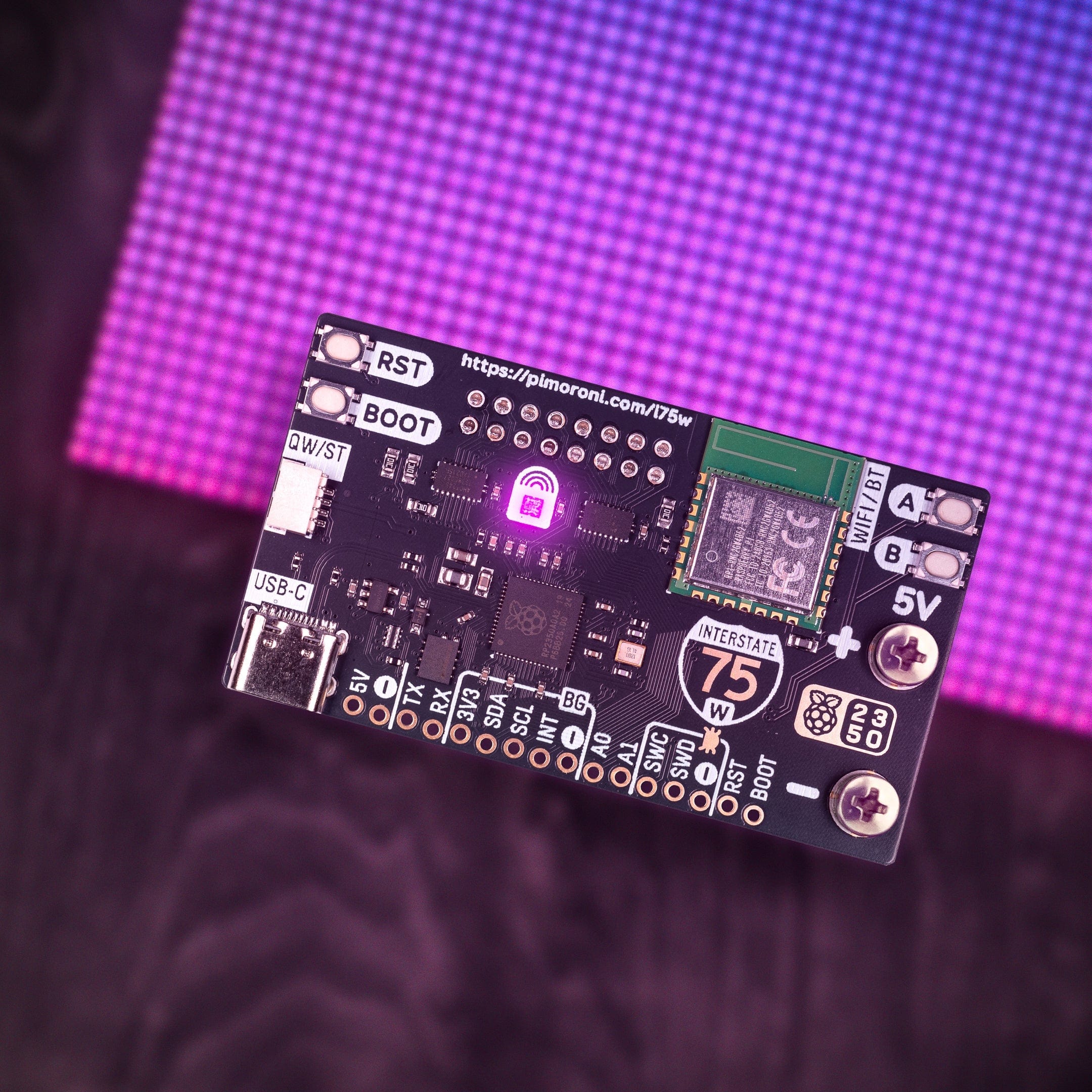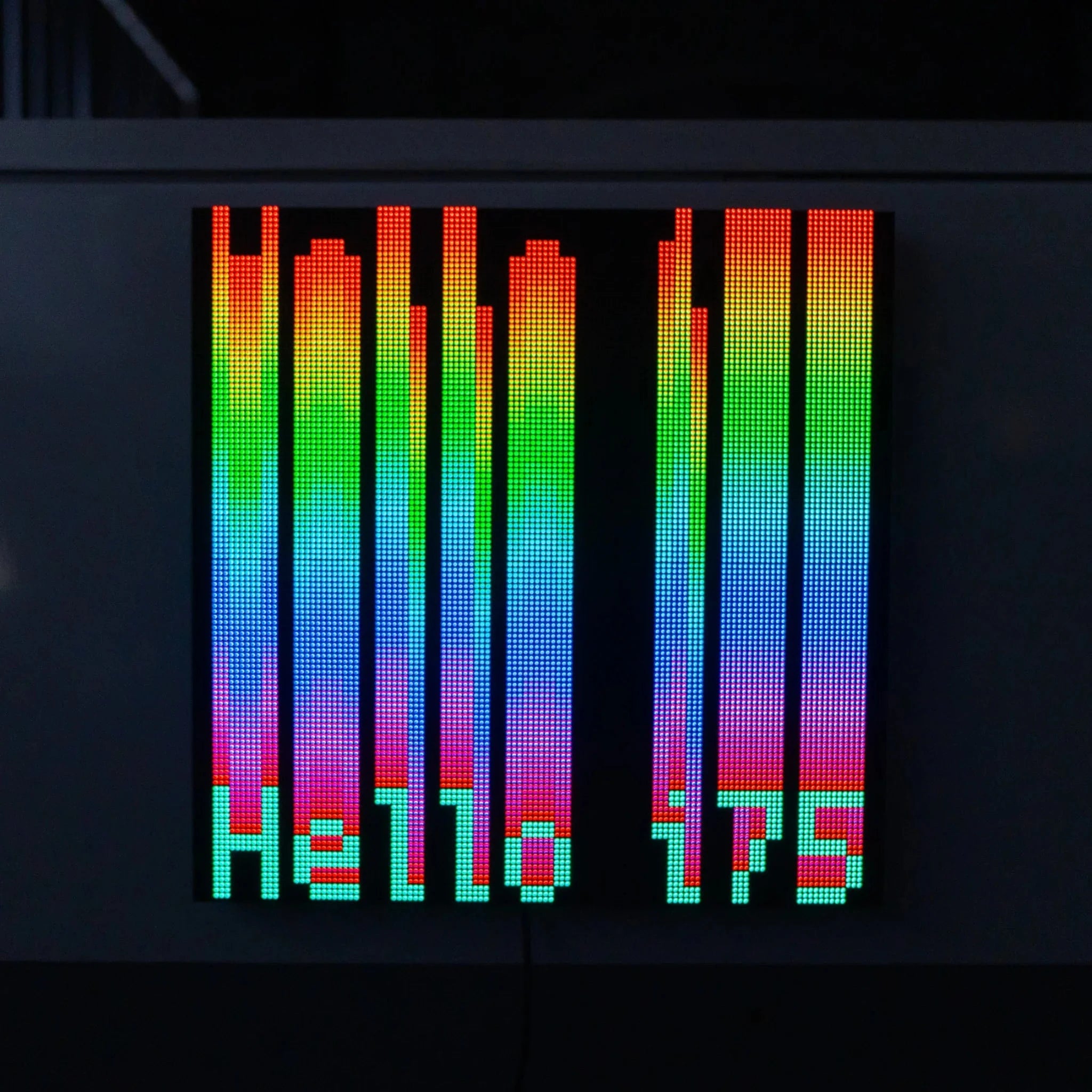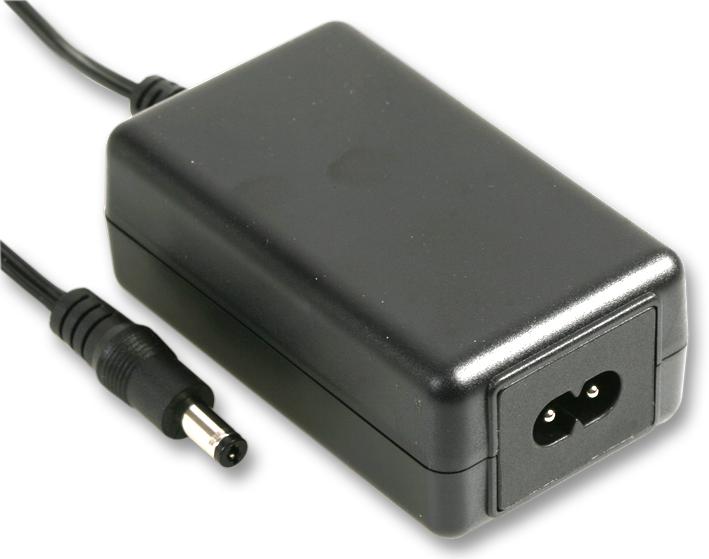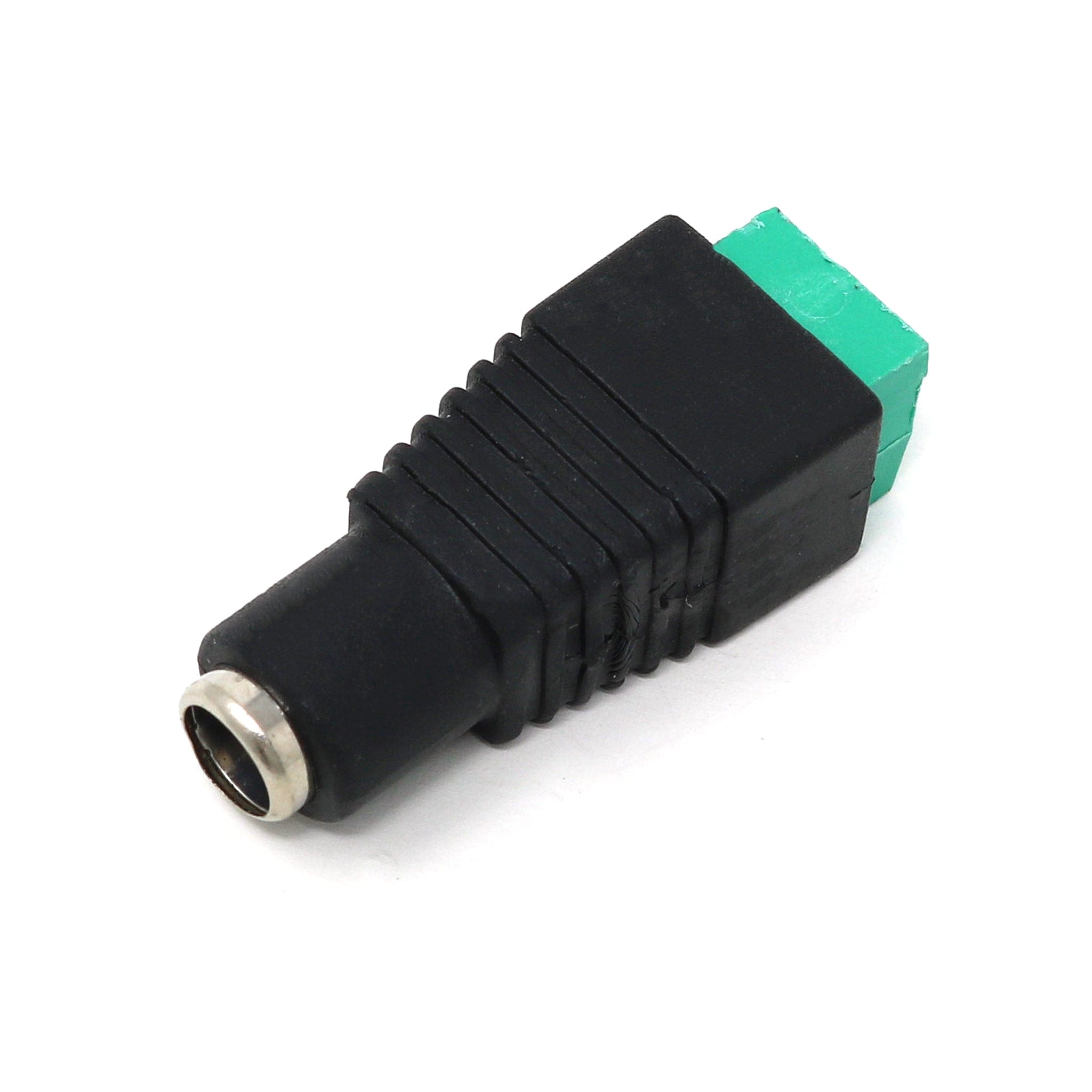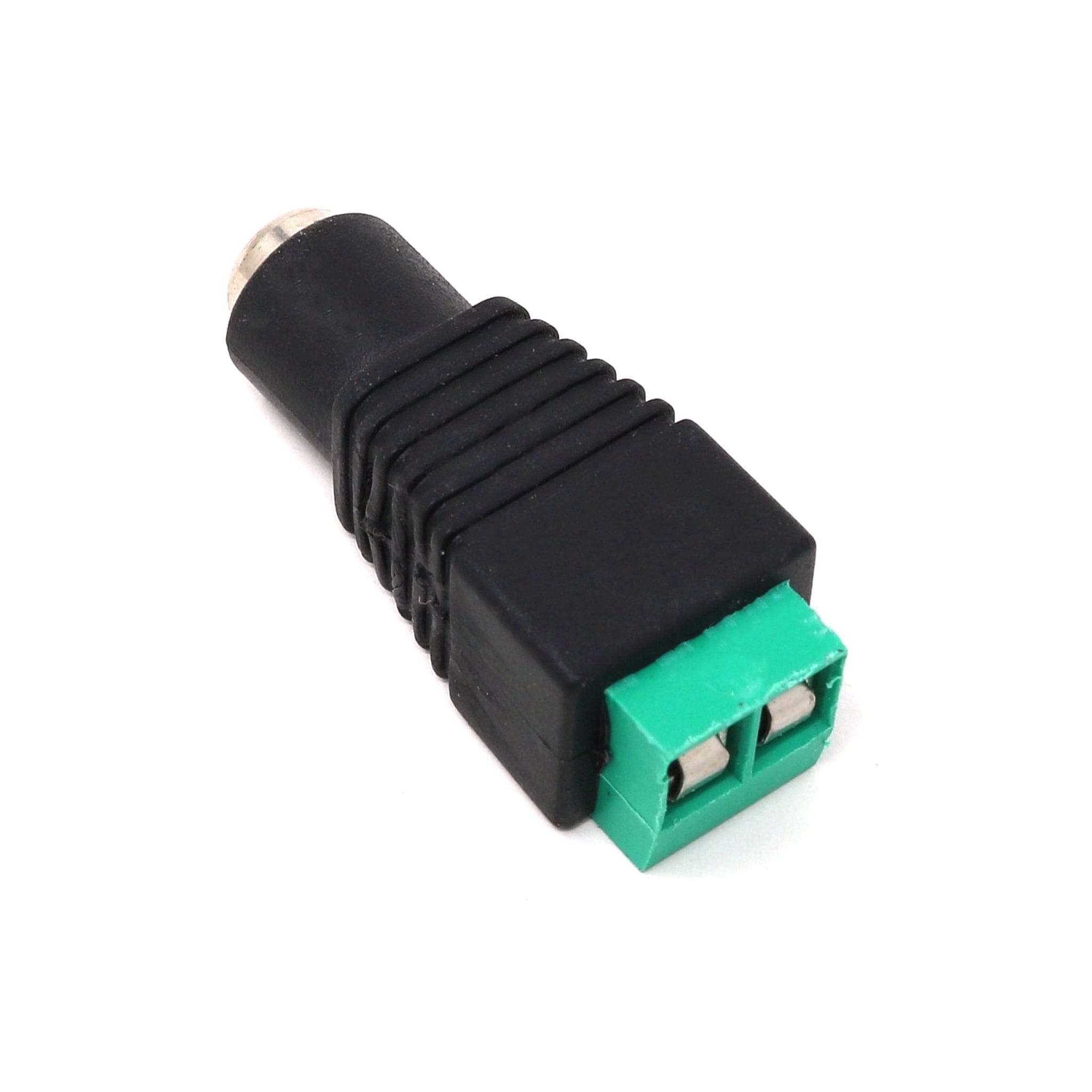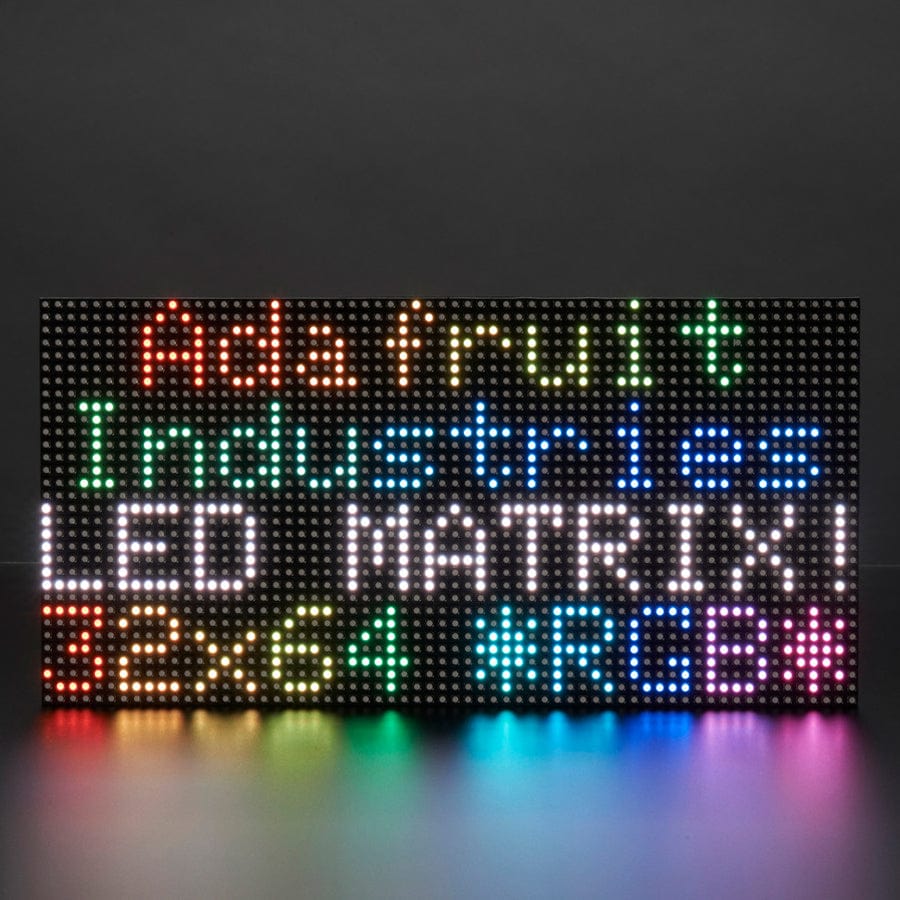
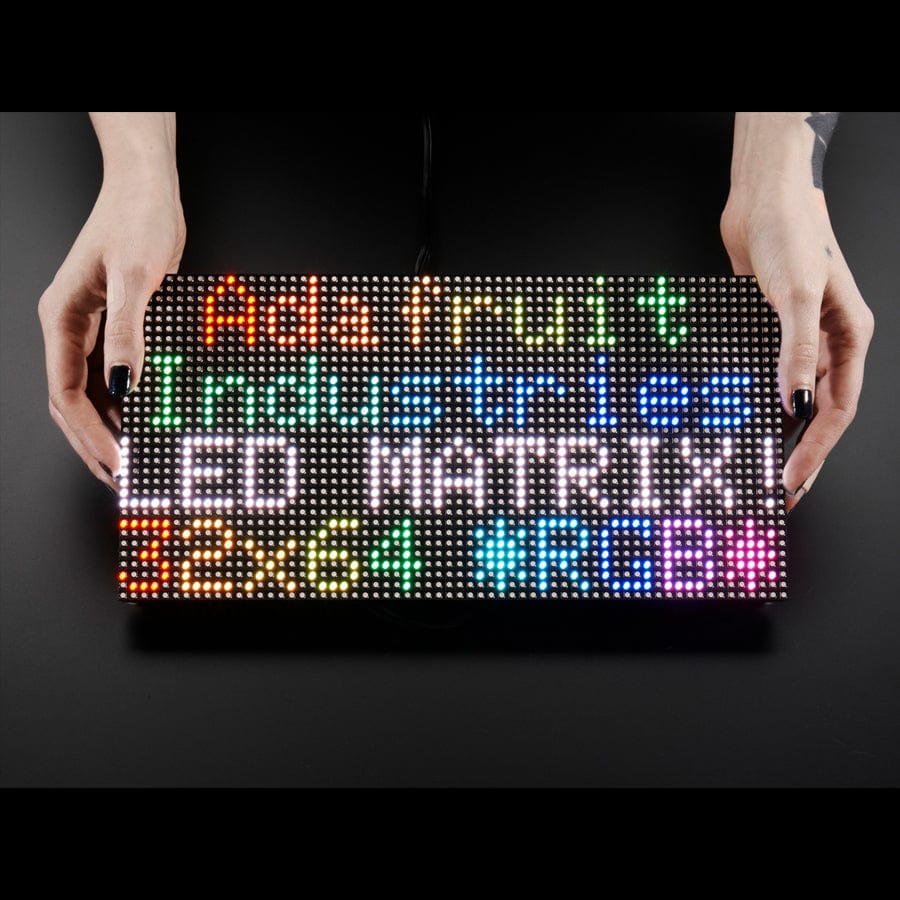
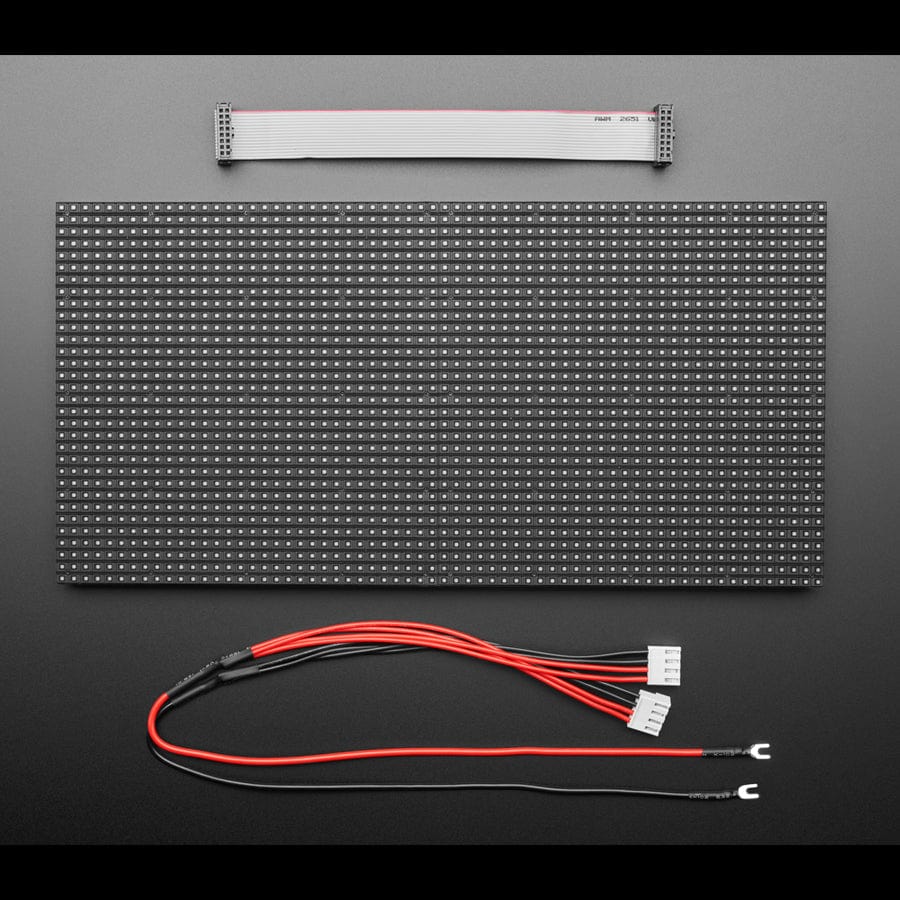
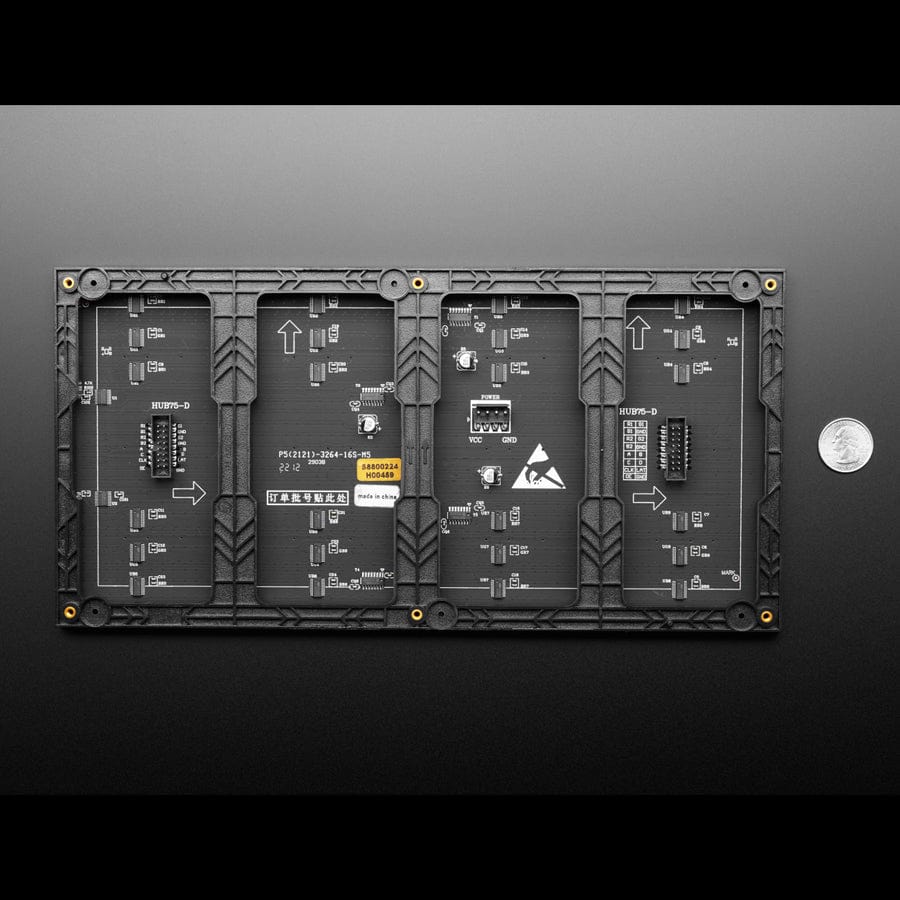
Login / Signup
Cart
Your cart is empty
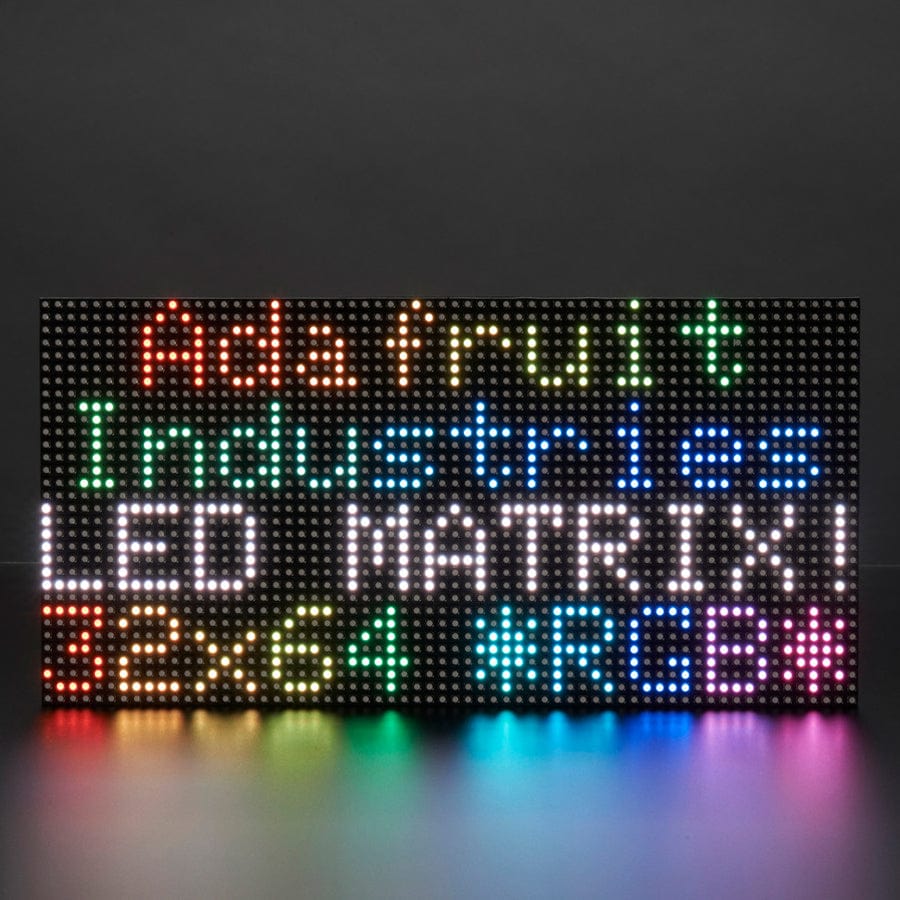
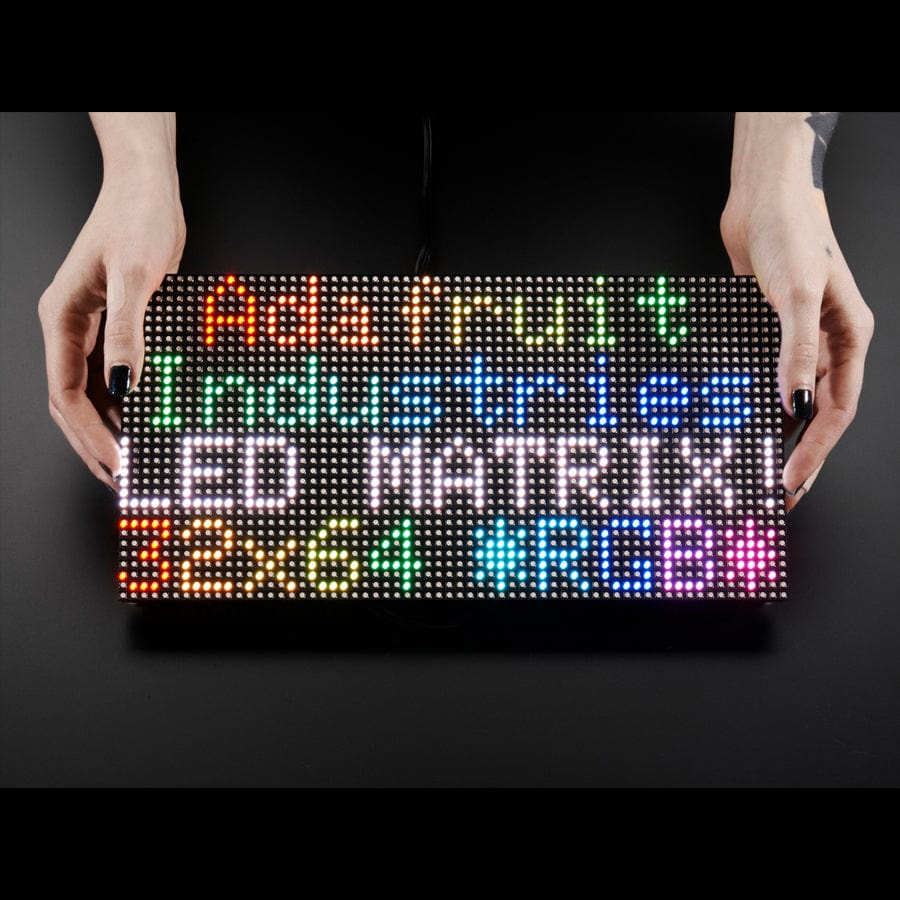
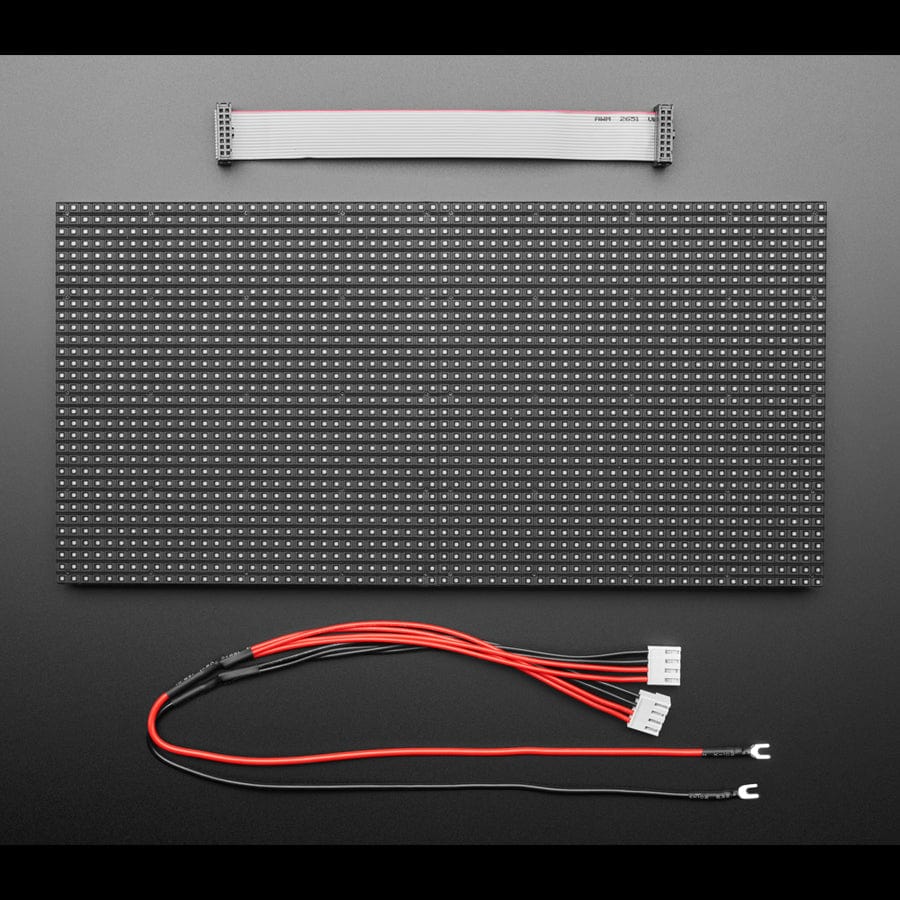
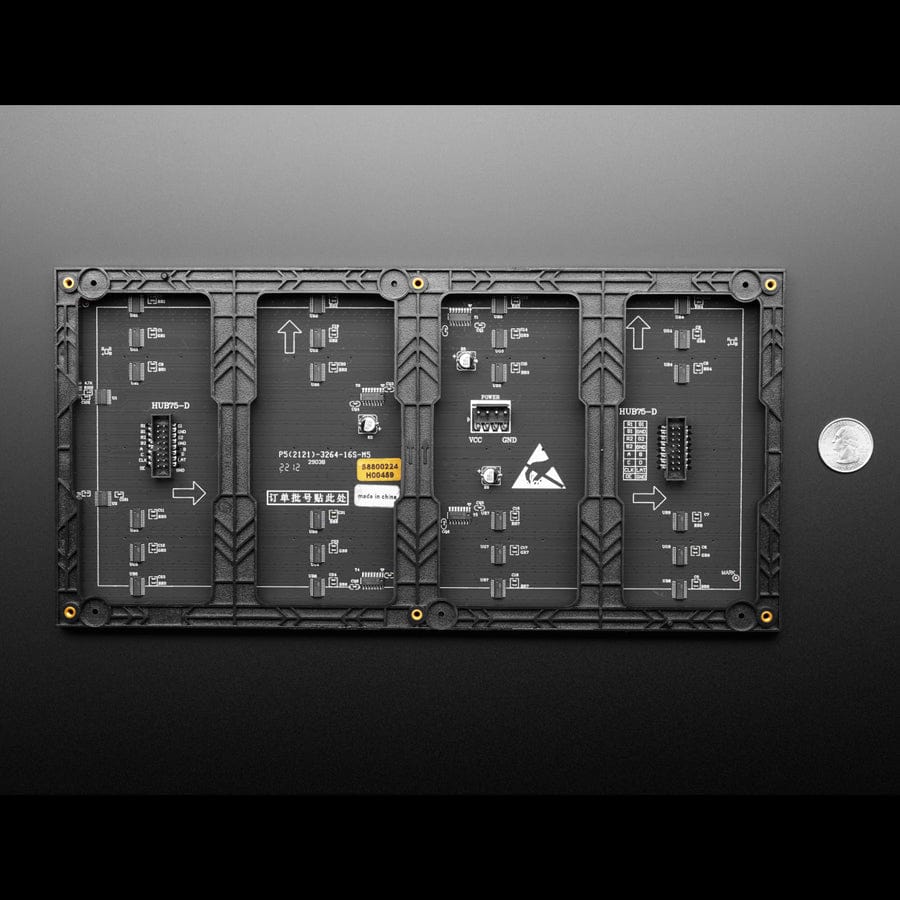
The 64x32 RGB LED Matrix Panel (5mm pitch) brings full-colour visuals to your projects. With 2048 bright LEDs arranged in a 64x32 grid, it’s perfect for signs and animations. It works with Raspberry Pi, Arduino Mega, and similar boards using a 5V power supply.
Bring a little bit of Times Square into your home with this sweet 64x32 square RGB LED matrix panel. These panels are normally used to make video walls, here in New York we see them on the sides of buses and bus stops, to display animations or short video clips. We thought they looked really cool, so we picked up a few boxes of them from a factory.
This version is the 5mm pitch 64x32 RGB LED Matrix. Please note, you cannot use an Arduino UNO to drive this size, it's way too big! Use an Arduino Mega, Raspberry Pi, BBB, or another device that can handle displaying to RGB matrices and has plenty of RAM.
This is a lot like our 6mm Grid 32x32 RGB LED matrix panel, but it's about twice as wide and looks excellent from far away. If you are looking for other pitches of 64x32 matrix, check out our 3mm pitch, 4mm pitch, or 6mm pitch 64x32 RGB LED Matrices.
This matrix has 2048 bright RGB LEDs arranged in a 64x32 grid on the front. On the back, there are two IDC connectors (one input, one output: in theory you can chain these together) and 12 16-bit latches that allow you to drive the display with a 1:16 scan rate.
These displays are technically 'chainable' - connect one output to the next input - but our Arduino example code does not support this (yet).
These panels require 13 digital pins (6-bit data, 7-bit control) and a good 5V supply, up to 4A per panel. We suggest our 4A regulated 5V adapter and then connecting a 2.1mm jack. Please check out our tutorial for more details!





